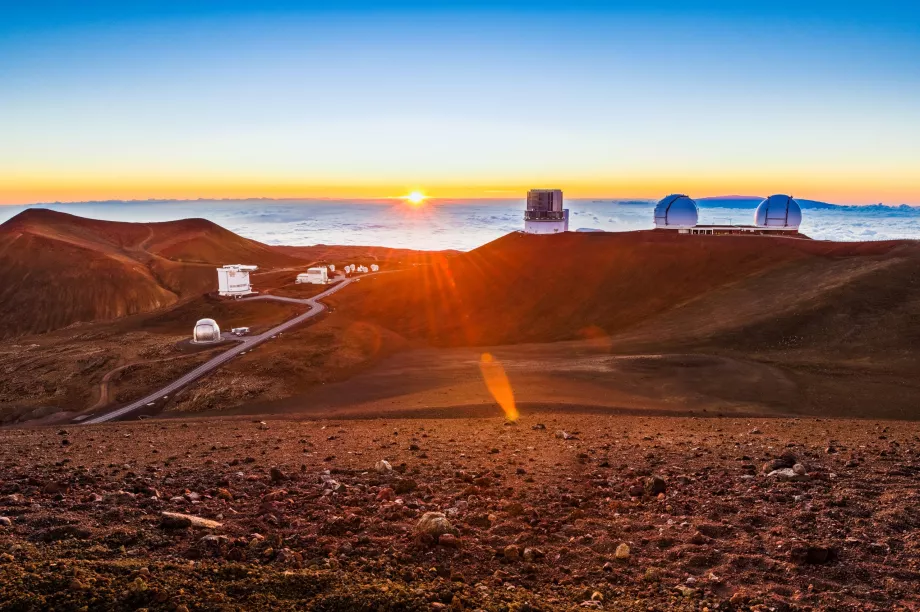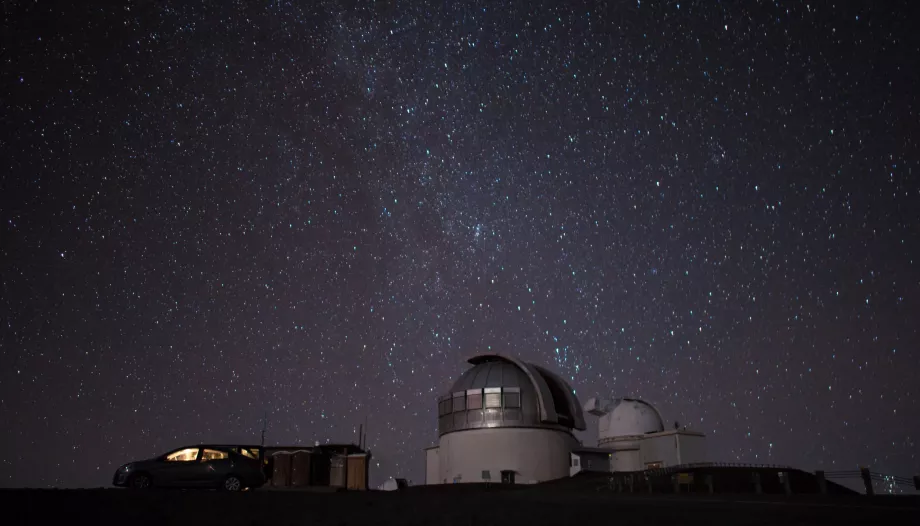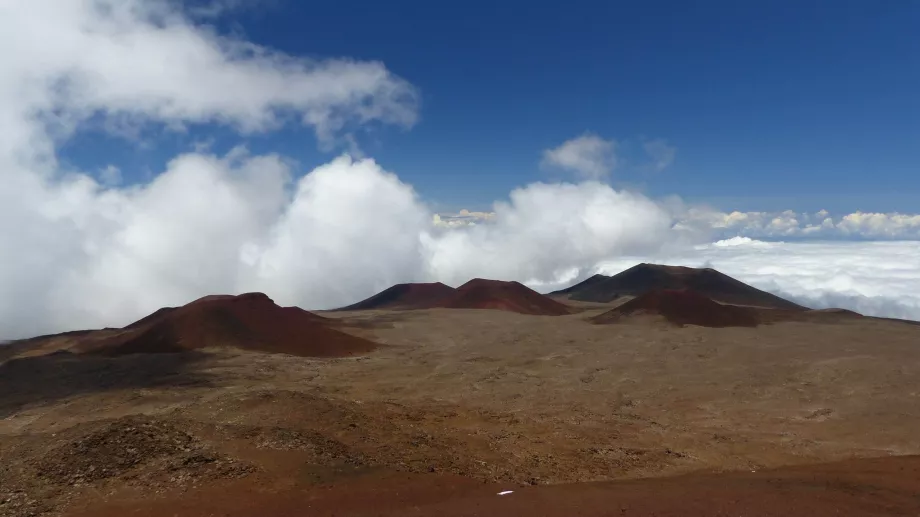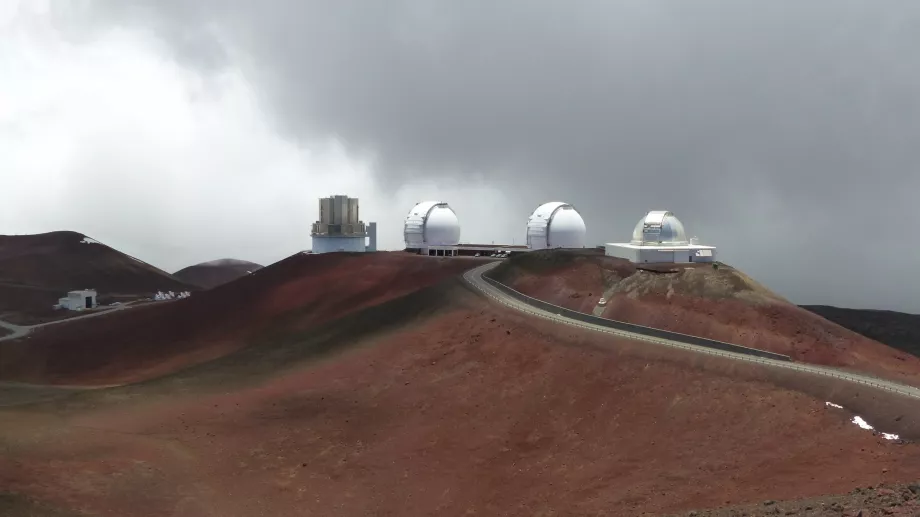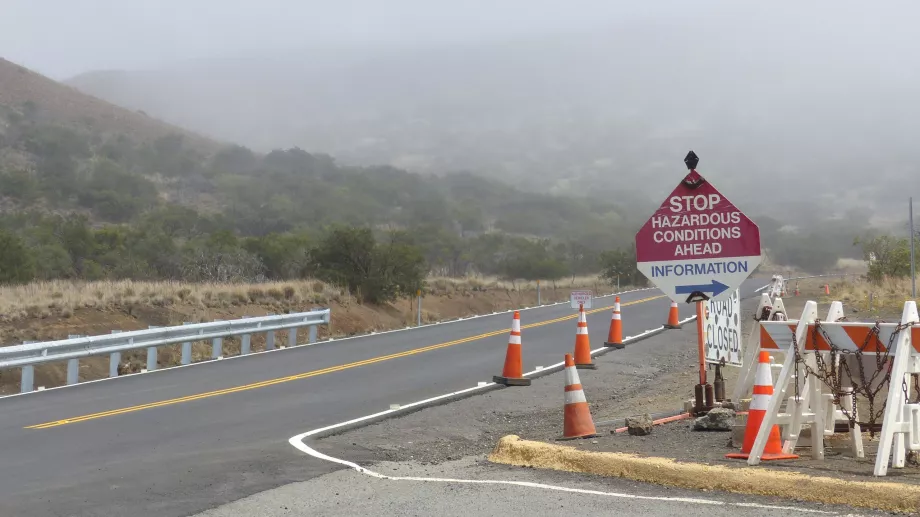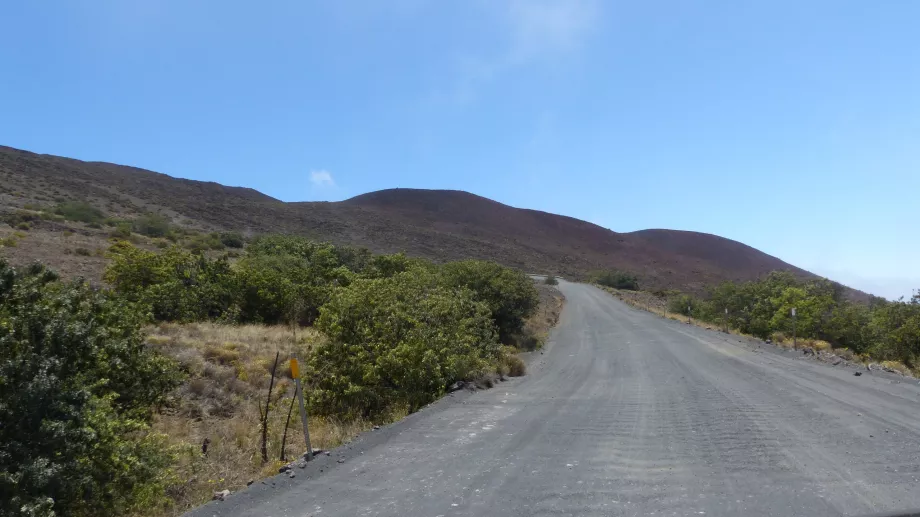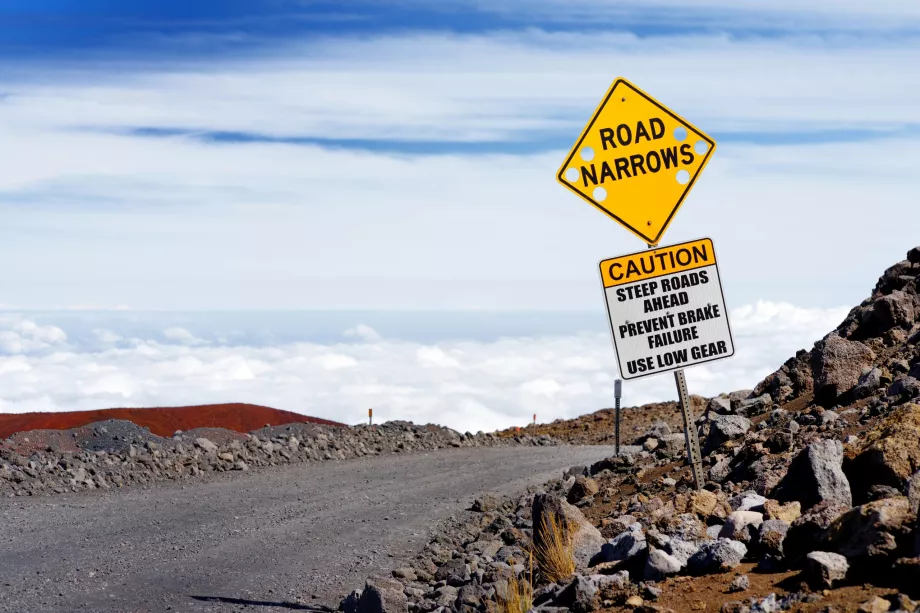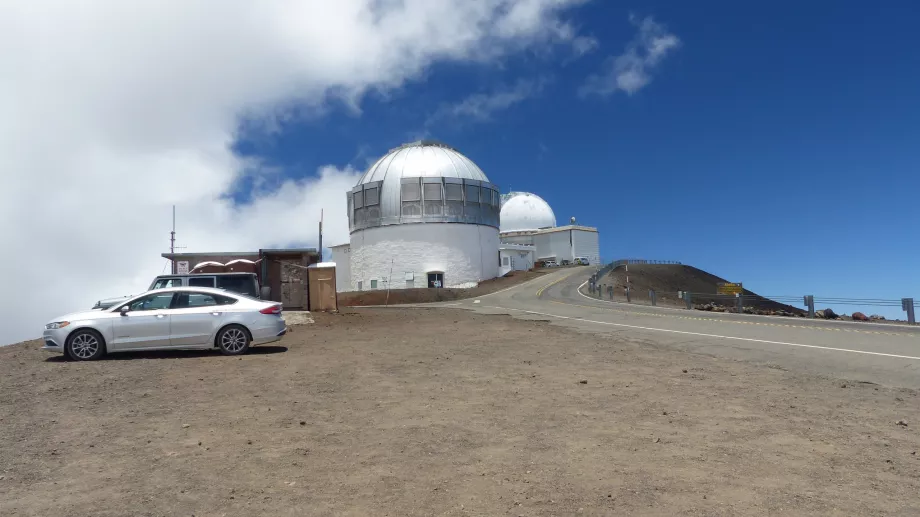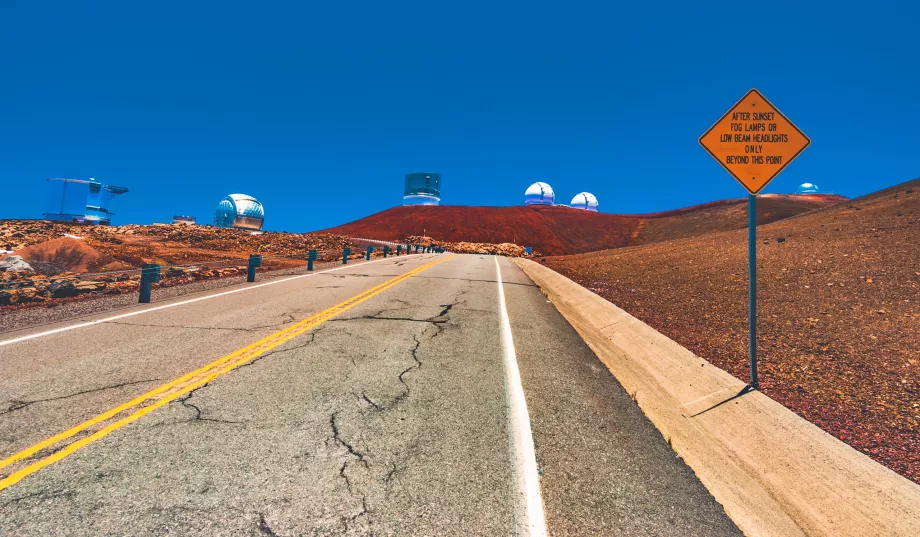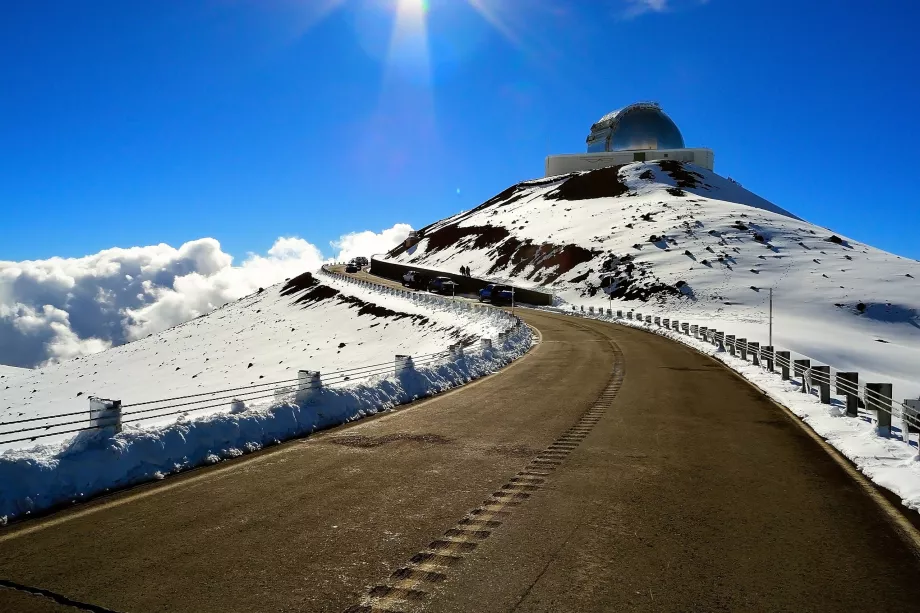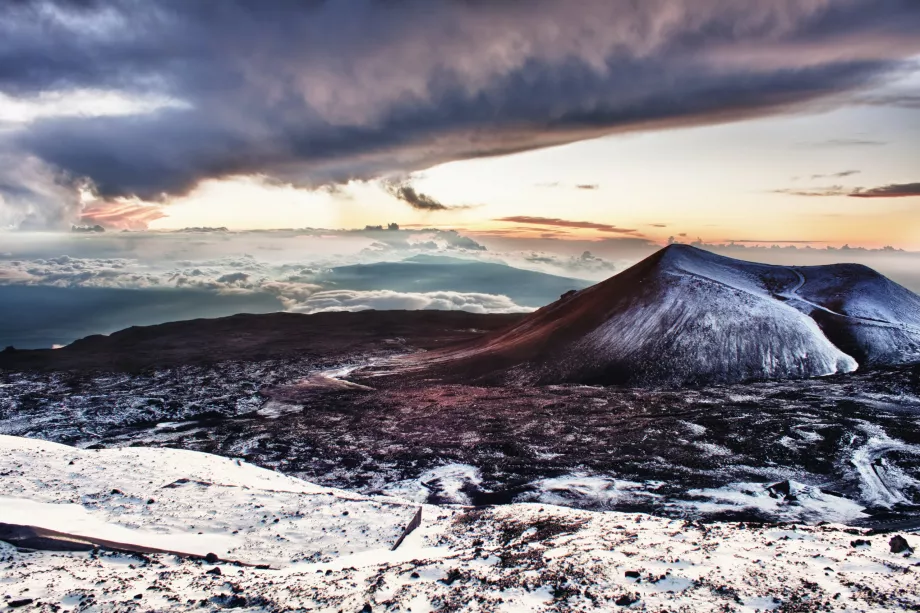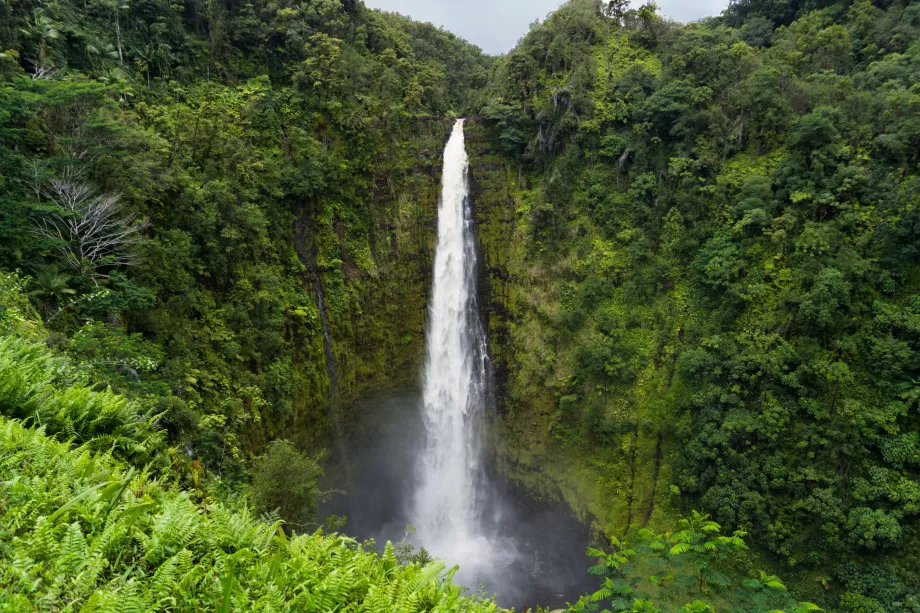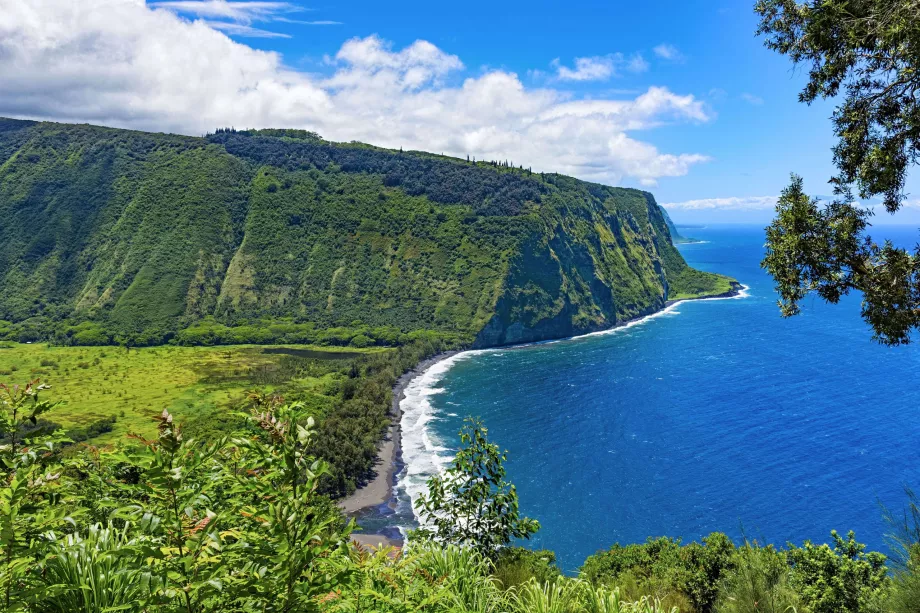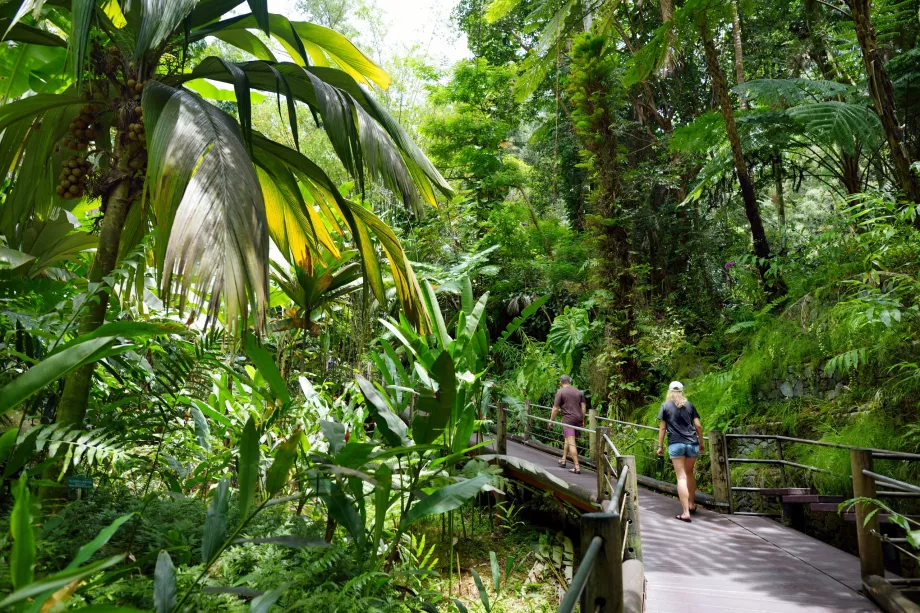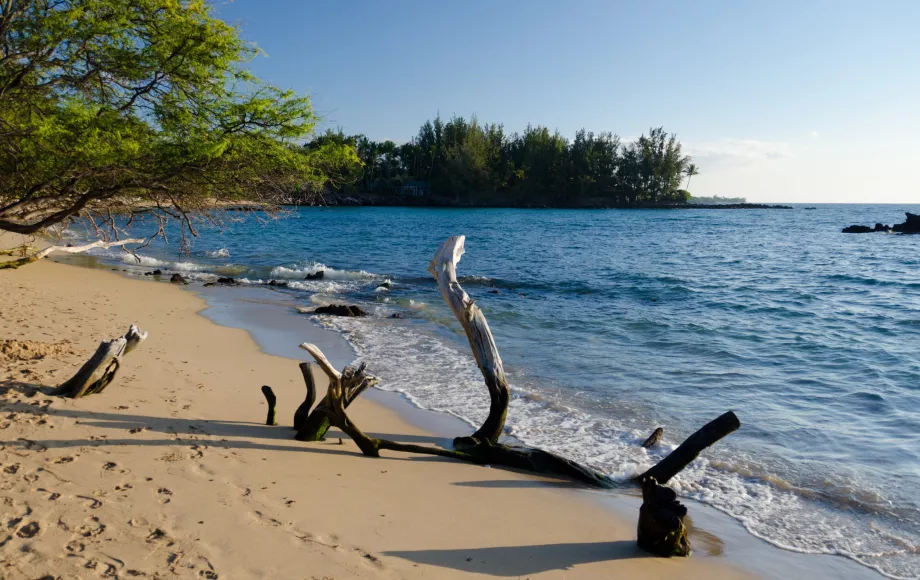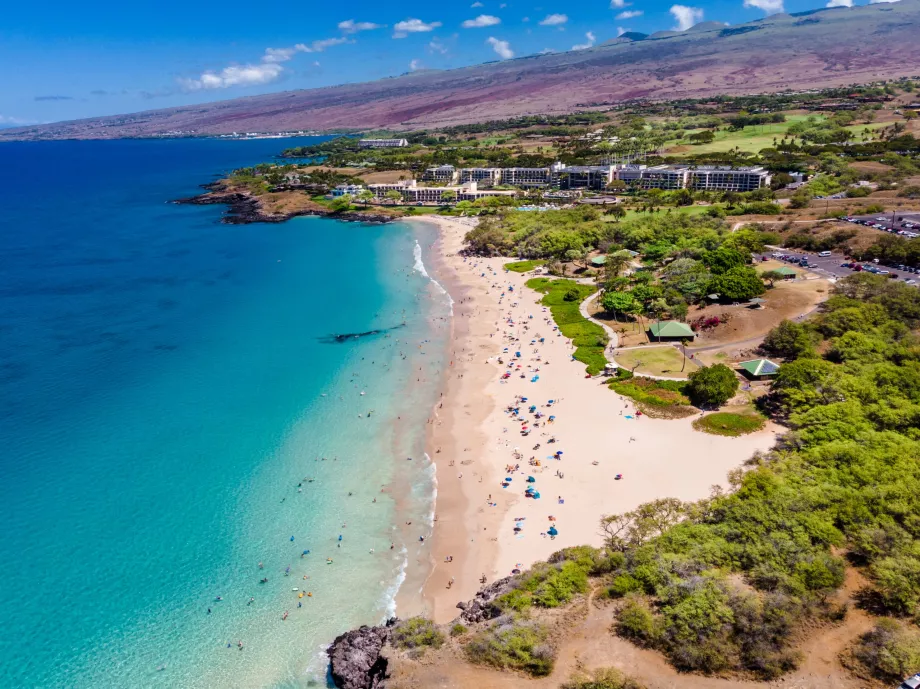Mauna Kea
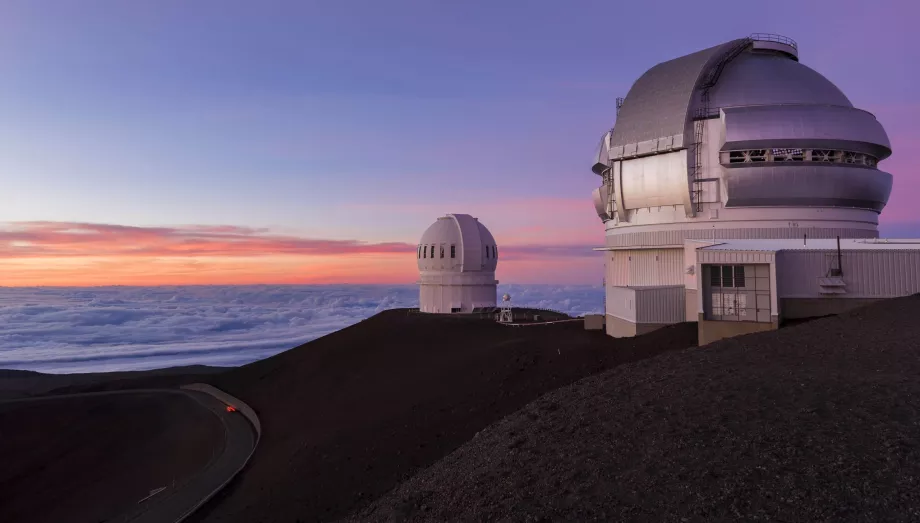
The highest mountain in the world. Yes, we attended geography classes diligently.
Mauna Kea may rise to an altitude of "only" 4,207 metres, but if you measure the mountain from its base deep below sea level, it surpasses even Mount Everest, reaching 10,205 metres. It is therefore technically the highest mountain in the world, although not the highest in altitude.
Find the best hotel on the Big Island
Mauna Kea is a massive volcano that is no longer active, and several observatories have risen on its summit. In fact, the night sky viewing conditions here are the third best in the world.
For this reason, there is a paved path leading to the summit, which is open to the public at no charge.
Breathtaking views
At the top of Mana Key, you'll get incredible 360° views of the surrounding lunar volcanic landscape, which lies above the clouds for much of the day.
This often adds to the magic of the scenery, with the red-brown soil of the peak and several conical volcanic craters rising above the clouds, and Maui's Haleakala volcano, 1,000 metres below, can regularly be seen in the background over 100km away.
An extremely popular activity on Mauna Kea is watching the sunsets, which will always be magical. Either the sun sets behind the clouds over the wild moonscape, with the clouds subsequently turning many shades of red, or on clear days you can watch the sunsets over the wide, endless Pacific.
On clear nights, it's also worth waiting for total darkness to fall and enjoy magnificent views of the night sky without any light pollution.
Getting to the top
The highest point of Mauna Kea is easily reached by car, but there is also a challenging hiking trail.
By car
There is conflicting information on many discussion forums and websites. Some say that driving up to the top is forbidden, others say it is allowed, and still others say that you will only be allowed up the hill in a 4x4.
The fact is that you can drive a moped up to the top, it is just recommended to have a 4x4 vehicle. The problem arises with car rental companies because part of the road is not paved. Some of the conditions prohibit going to Mauna Kea directly, others allow only 4x4 and some do not specify.
If you violate the prohibition, you are liable only to the rental company, and only if you have a technical problem or accident while on the road.
Officially, however, anyone is allowed to go up the road, and the road is only closed in adverse weather conditions.
Compare Big Island car rental prices
The road itself is not as difficult to drive as it is claimed. Driving from Hilo, take the main Saddle Road (number 200) all the way to Kona; after about half an hour's drive, turn right and follow the normal road to the Mauna Kea Visitor Center at 2,800 feet.
Take a half-hour break here to see what the weather is like on the summit. The center opens at noon, closes at 7:00 p.m., but you can go to the summit 24 hours a day, weather info is visible on the screen at the entrance 24 hours a day.
The Mauna Kea Visitor Center has a small gift shop with souvenirs and snacks and free restrooms.
From the visitor center, there is a 5-mile stretch of gravel road, but it is wide enough and well marked, and then you drive up to the top again on good quality asphalt.
The only problem weaker cars may have is braking on the way down. The European in particular has to get used to the automatic gearbox and be so careful, the brakes don't really get a break on the road.
On the top of the mountain, apart from the breathtaking views, you will only find a lot of observatories and public toilets. Unfortunately, there is no sign with the altitude to take cool photos at the top.
On foot
The only official hiking trail also starts at the visitor center, which can only be reached by car. The distance of less than 10 km steeply uphill is the lesser hindrance.
It is much worse for untrained travellers to navigate such challenging terrain at around 4,000 metres above sea level, so the footpath can only be recommended for true enthusiasts. Moreover, it runs all through more or less the same monotonous lunar landscape.
Up to the very top
Parking lots are scattered along the observatories, which, however, do not stand at the very highest point of the mountain. To get there, you have to walk a very short trail measuring less than a kilometer.
It can be a bit of a struggle for the untrained, especially because of the high altitude, but it can be done without too much difficulty if you are not in a hurry. However, as already mentioned, you won't find any sign with the name of the mountain and altitude at the top where you can take a photo.
Opening hours and tolls
Officially, the road to the summit always opens half an hour before sunrise and closes half an hour after sunset so that visitors can get the best photos. Unofficially, however, there is no control of the entrance to the hill and there is no barrier.
If you'd rather head up to the sunrise with more time to spare, it's no problem, as is the descent in complete darkness.
The road is only closed in case of extreme weather conditions.
There is no charge to drive up Mauna Kea.
Temperatures and weather at the summit
Although temperatures on Hawai'i Island rarely stray out of the 23 to 32°C range, of course, expect much colder temperatures at an altitude of over 4.5 kilometres.
Average temperatures at the summit range from -6 °C at night to about 5 to 6 °C during the day.
During the winter months (approx. mid-December to late February) there may be a continuous layer of snow around the summit, and in such cases you should expect the road up to be closed.
However, these conditions are not that common and you will usually only encounter snow fields off the road, which is maintained for staff access to the observatories.
High altitude
Before heading up Mauna Kea, it is important to keep in mind that you are heading to an altitude of over 4,000 meters where oxygen is thinner.
In addition, you'll probably be coming from the sea, i.e. from 0 altitude, and you'll be traversing a really big difference in altitude, which may not be the best for the human body. You are at risk of symptoms of altitude sickness, but you can prevent them with some preparation:
- stop for at least an hour at the Visitor Center at 2,800 meters.
- drink plenty of water on the day of the trip
- If you are going to dive on the Big Island, allow at least 24 hours between the dive and the trip to Mauna Kea
- take care to protect yourself from the sun, which is very aggressive at the top
- if you experience headaches, nausea, vomiting, severe coughing, etc., descend to a lower altitude immediately
Accommodation on Mauna Kea
If you are considering a stargazing or sunset trip and would like to stay near the mountain, then the closest option is in Hilo, 70 km away. There is currently no accommodation closer to Mauna Kea.
What to see around
Discover all the places to see in Big Island.
Any questions left?
If you have any questions or comments about the article...

